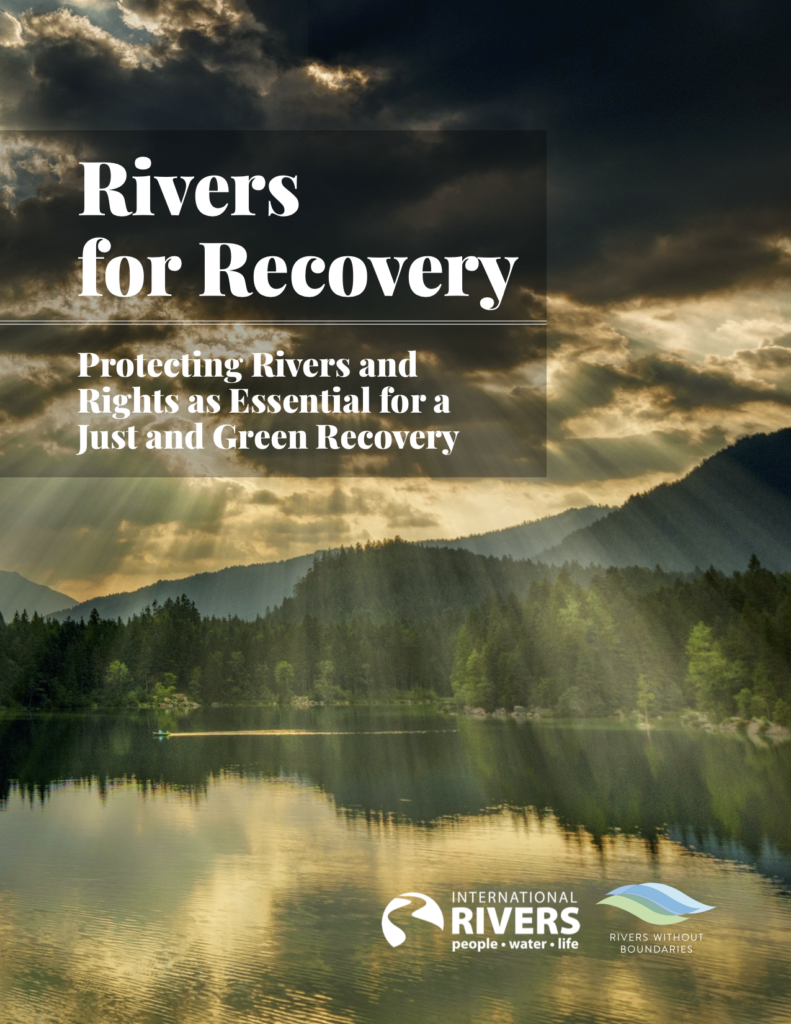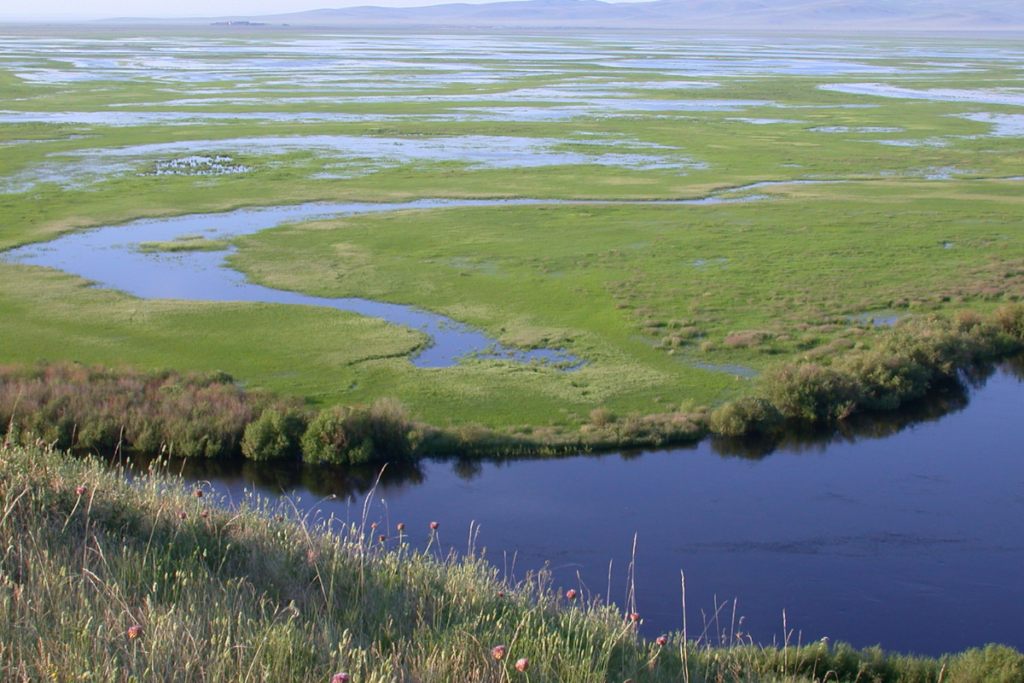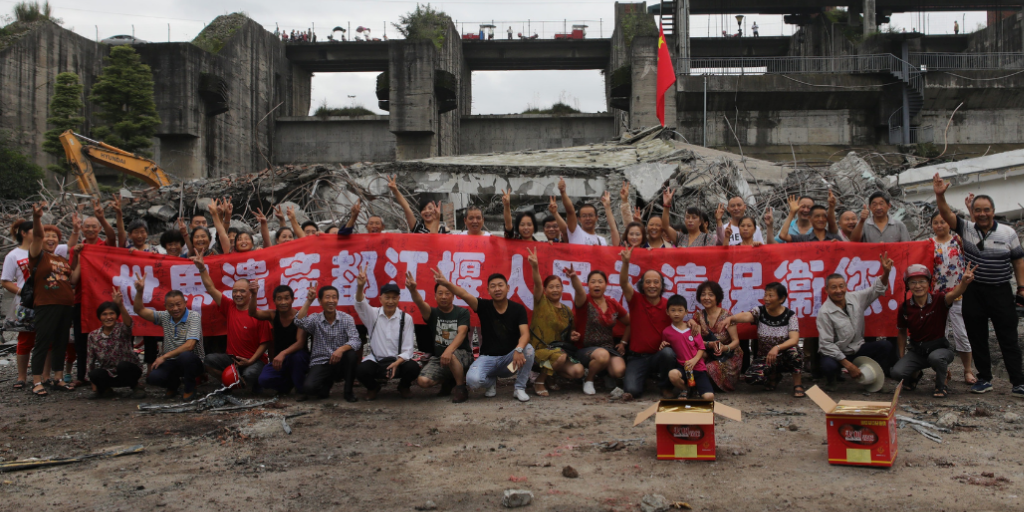
- Finds spate of new hydropower projects to be anything but “sustainable,” calls for an immediate moratorium
- Charts energy solutions that deliver sustainable jobs, better boost economies, reduce emissions, protect biodiversity
- Comes on the heels of an announcement that the world’s largest dam removal will proceed
- More than 225 organizations from 60 countries have signed a related global call so far
Contact:
Laurel Levin, LLevin@InternationalRivers.org, International Rivers
Nick Guroff, NGuroff@InternationalRIvers.org, International River. Eugene Simonov, Simonov@RiverswitoutBoundaries.org, Rivers without Boundaries
OAKLAND, CA — On the 20th Anniversary of the landmark World Commission on Dams Report, a new report from International Rivers and Rivers without Boundaries charts an alternative course for post-pandemic energy development than the revitalization of a failing hydropower industry. As Rivers for Recoverydetails, despite the rhetoric of the hydropower industry, the industry’s global flagship projects continue to prove poor investments. This in addition to destroying critical ecosystems and biodiversity, while devastating local populations, human rights, and food security.
For years, the installation of new hydropower facilities has steadily declined as renewables have rapidly increased. This is a result of a confluence of factors including the growing cost efficacy of alternatives (especially solar and wind), the lengthy timelines and burdensome costs (social, environmental, and economic) of large dams, a worsening climate crisis, technological innovations in energy efficiency, storage, and transmission, and a growing global movement to keep or return rivers to their natural state. Indeed Cambodia recently announced a 10-year moratorium on Mekong mainstream dams and U.S. governors announced the world’s largest dam removal project will proceed.

Yet, the International Hydropower Association (IHA), far from shifting course, is urging its members to “have shovel-ready projects in place for the post-Covid 19 economic stimulus plans.” In other words, the hydropower industry is seeing the pandemic as an opportunity to profit from recovery funds that would be much better spent elsewhere, including upgrading and improving the efficiency of existing dams.
“The hydro industry is in the business of self-preservation. But humanity’s self-preservation needs to prevail,” said Darryl Knudsen, executive director of International Rivers. “Given the track record and problems inherent in large-scale hydropower, we should be rushing toward alternatives, not channeling money into false solutions.”
The report’s survey of major projects that came online immediately prior to the pandemic, includes:
The Belo Monte Dam in the Brazilian Amazon. The project had a price tag of $10 billion, was fraught with corruption scandals, devastated Indigenous territories and way of life, displaced thousands of families, and harmed critical biodiversity in the globally sensitive Amazon rainforest. What’s more, the project will only deliver a fraction of the 11 gigawatt (GW) capacity it promised. Yet the IHA heralds it as a major success.
The Wunonglong and Dahuqiao Dams in China. These recent additions to the series of dams on the Lancang, or Upper Mekong River, in addition to the new Xayaburi and Don Sahong Dams in Laos, have contributed to an unfolding ecological disaster downstream in the Lower Mekong Basin that threatens the world’s largest freshwater fishery and the collapse of the region’s “food bowl.”
The Genale Dawa III Dam in Ethiopia. Finally commissioned after nine years of construction, the dam will restrict flows in such a way that Somalia’s agricultural production and food security could be seriously impaired.
“We have the opportunity for a reset in how we relate to and manage natural resources, while developing energy solutions that genuinely address the climate crisis and build economies,” said Eugene Simonov, coordinator of Rivers without Boundaries. “It’s critically important we take the opportunity, lest we sink deeper into climate crisis and further accelerate the mass extinction of species.”
Rivers for Recovery provides an indicative list of destructive projects that are yet in the pipeline but could be stopped with forward-thinking on cheaper, cleaner options by governments; a chance to avoid crippling new debt in the post-pandemic recession. It also provides a detailed roadmap that not only calls for a moratorium on new dams in the economic recovery, but investments in alternatives and increasing efficiency of current dams, and commitments to protect critical biodiversity and the world’s remaining, free-flowing rivers.

What’s more, the report’s findings affirm much of what the World Commission on Dams laid out twenty years ago. The Commission, a multi-stakeholder group from civil society, the private sector, academia, and beyond, examined the environmental, social, and economic impacts of large dams around the globe. And their final report, Dams and Development: A New Framework for Decision–Making, released in November 2000 under the patronage of Nelson Mandela, provided a comprehensive framework for alleviating the competing pressures on our scarce freshwater resources. Globally, rivers and the communities that depend on them remain threatened. And the fight against destructive, expensive, unprofitable dams continues. The Commission’s recommendations remain an important foundation for further innovations as we seek to rebuild economies from the pandemic.
The Rivers for Recovery report and a growing global call to ensure a truly green and just recovery can be found at www.Rivers4Recovery.org. Register for next Thursday, December 10’s webinar on the topic here.
###
Additional quotes from organizations supporting the global call for a just, green recovery:
Comment from World Heritage Watch
“Rivers are the veins of the land; they are of huge but often underestimated value for both biodiversity and culture,” says Stephan Dömpke (Germany), chair of World Heritage Watch, which coordinates a global network of heritage groups. “Very few of them are left in natural condition, and we cannot afford to mutilate them any longer. Generating electricity in particular can now be done more efficiently and in more environmentally friendly ways than through hydropower dams, which have devastating effects far downstream. The “Heritage Dammed” Report which we issued to UNESCO last year showed that hydroelectric dams threaten dozens of World Heritage sites in some of the most precious corners of the planet. It is time that we stop this and protect the world’s freshwater ecosystems.” More here.
Comment from Save the Tigris
“In new times, new approaches are needed to save water and peace,” says Toon Bijnens, coordinator of the Save the Tigris Initiative. “Because of the creation of dams, the waters of our river have become the subject of fierce competition between Turkey, Iran, Syria and Iraq. We call on the authorities of the basin to refuse the plan to create 200 more dams to retain water. This is a dead-end road leading to strife and destruction. New methods of water use and green development need to be introduced.
Further comment from Eugene Simonov, Rivers without Boundaries
“This is a campaign to express our vision of the future for our rivers. The call and report show irrelevance of “sustainable hydropower” and false promises of its promoters in the context of green recovery.
The global call is envisioned as a signal to:
- governmental agencies shaping economic recovery packages;
- energy companies reassessing their post-covid development options;
- financial institutions, especially those on green\climate side which seek to readjust their portfolios;
- intergovernmental institutions which are supposed to care for biodiversity and rivers;
- communities who need information empowering them to fight for their rivers.
We expect that the call, report with a body of evidence, reinforced by several hundred organizations and thousands of individuals, will enable campaign participants to push for river preservation and restoration in 2021 and beyond.
The campaign may have continuation in specific regions and countries. In Russia together with the call we present a report “Russian Hydropower. An Epilogue”on 150 year history and inevitable decline of hydropower sector, which once destroyed every other major river of the Soviet Union.”
Executive Summary:
Featured image: Dujiangyan community members celebrating the demolition of the Shengxing power station. The banner reads “We will protect you forever, Dujiangyan World Heritage Site!” | Photo by Peng Wei.

